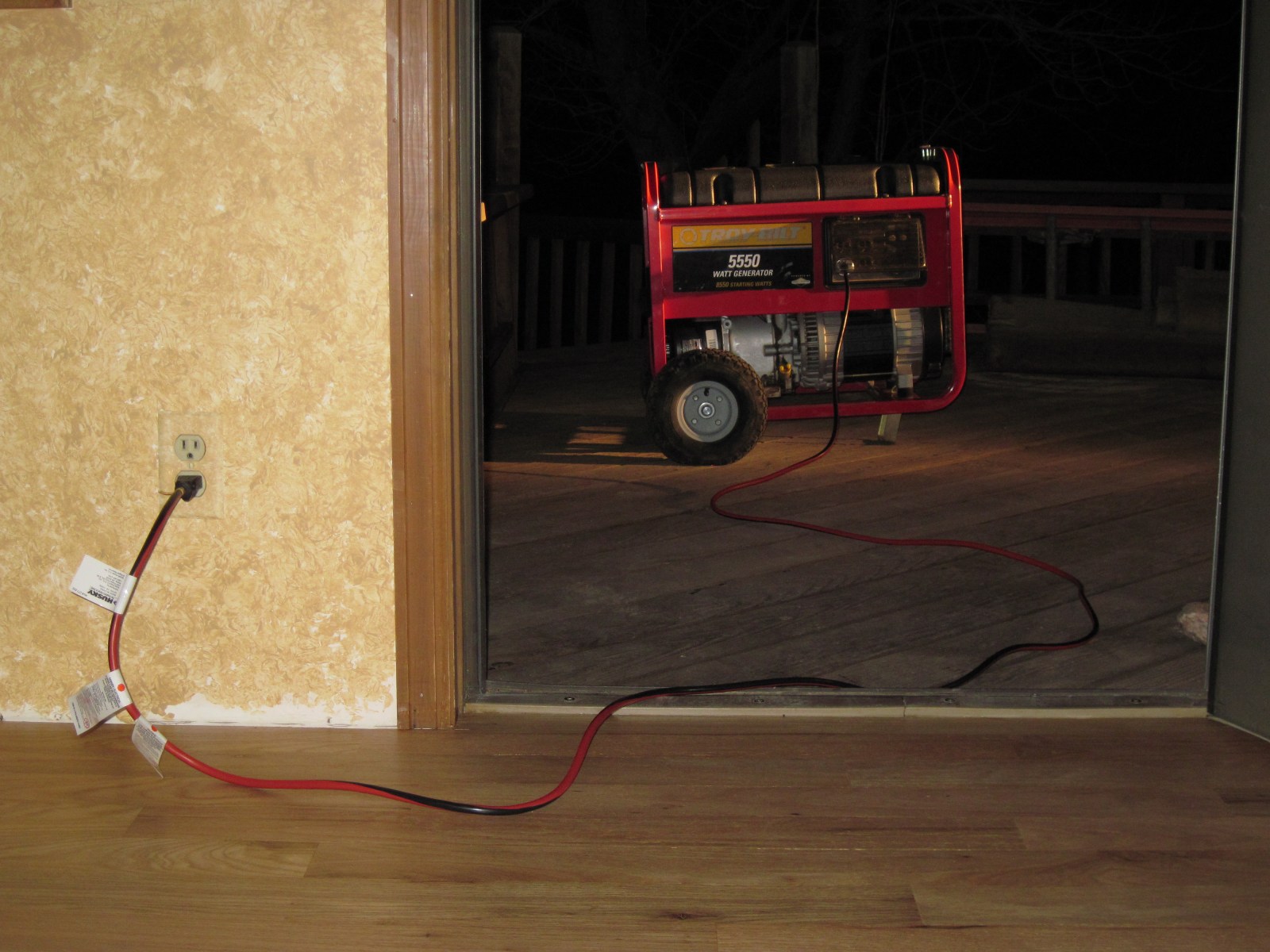ncbill
Thinks s/he gets paid by the post
Okay, so it doesn't in fact bypass the breakers except for any circuit that it's plugged into. I'm guessing that plugging into a 110 outlet will only power some of the circuits in the house?

Through trial and error, he'll end up with a generator like this:

Which can output up to 15 kW.
IIRC the 120VAC legs are split at the panel, so plugging a suicide cord into a 120VAC outlet will only power half of the 120VAC circuits on the panel.
Better to simply connect the generator's 240VAC outlet to a dryer outlet (30A max, IIRC) to run all the household circuits.
After he flips the main breaker off or pulls the meter.
Best is to improve the above by getting a transfer switch at a local electrical supply/hardware store and installing it themselves (they do come with instructions).

